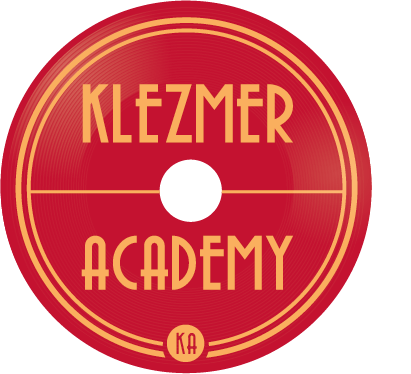Despite the worldwide revival of klezmer music over the past 30 years, many people don't know what it is or where it comes from. One commonly heard response to "Well, what is klezmer, anyway?" is that it's "Jewish jazz." While this answer is catchy and usually satisfies the questioner, it isn't actually true, and considering some differences between klezmer and jazz may help clarify matters.
Klezmer music, which can be most easily defined as the dance music of the Yiddish-speaking Jews of eastern Europe, is essentially communal, like Jewish prayer, rather than individual. The Yiddish word klezmer is derived from two Hebrew words: kley, which means tool or vessel, and zemer, which means song. Thus, as one famous klezmer has said, the musician becomes the vessel through which song flows, a concept that most jazz lovers would find quite congenial. It is, however, a very modern, not terribly authentic notion. In fact, kley is a word that resonates loudly in Yiddish culture. There is a wonderful term in Yiddish for those members of the community who performed ritual functions: kley koydesh, or holy tool. These included the shoykhet (kosher slaughterer), the moyl (performer of circumcisions), the rabbi, etc. These people were tools of the community. So was the musician, without whom there could be no weddings, no celebrations of Simkhes Toyre, no post-briss partying.
The music itself is an exciting mixture of prayer modes (nusakh) and melodies, Ukrainian folk tunes, Romanian music, gypsy soulfulness, and dozens of other influences of the cultures among which Jews lived, all played to the rhythms and inflections of spoken Yiddish. It expresses the whole range of human emotions, from the most exuberant joy to the most profound sadness. Melody is the key; unlike jazz, where a melody is improvised over a fixed set of chords, in klezmer music, the melody is fixed, and the chords are almost unnecessary. Rather than improvising, the musicians take the melody, embellish it in a large variety of ways, polish it up a little, and offer it back to the community to listen or dance to. Where jazz is laid back, always a little behind the beat, klezmer rushes ahead, which is part of what makes it so hard to sit still while you listen to it.
Another misconception common in the general public, even among those who are relatively familiar with Jewish culture, is that there is one universal klezmer band to which all klezmorim belong, or at least that all klezmer bands play a uniform style. In fact, there is a whole spectrum of stylistic approaches to Yiddish music, ranging from the most traditional to the most avant garde, with a shmaltzy, nostalgic approach lying somewhere in the middle. There are groups that virtually replicate the sound of old 78 rpm recordings, down to the instrumentation and even the mistakes; there are others that improvise Yiddish melodies to a hard rock beat, while still others attempt to merge Yiddish and jazz.
What klezmer does share with all other kinds of music is the ability to express the whole range of human emotions, from the most exuberant joy to the most profound sadness. Listening to the haunting, exhilarating sounds emanating from scratchy old 78s can be a profound experience, capturing the essence of Eastern European Jewish life in the last century and introducing it to a new generation.


